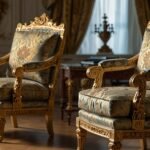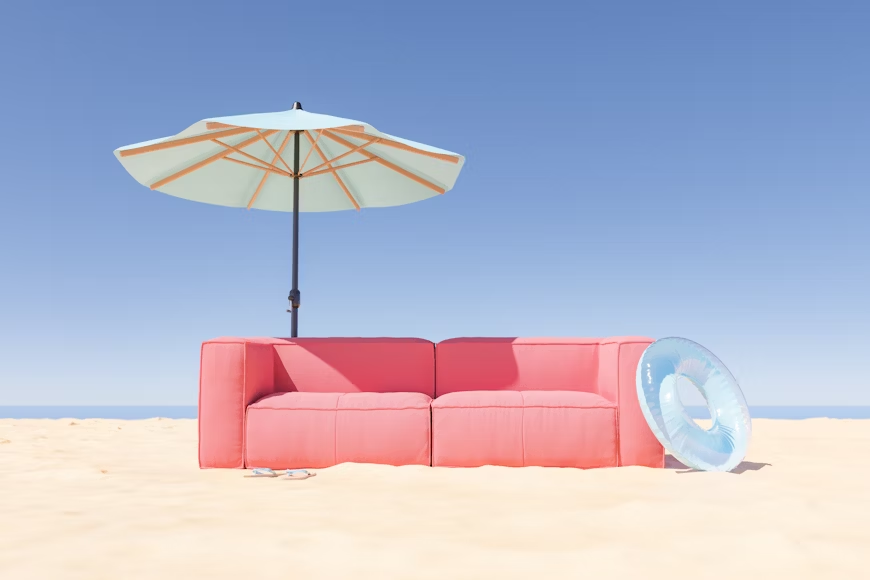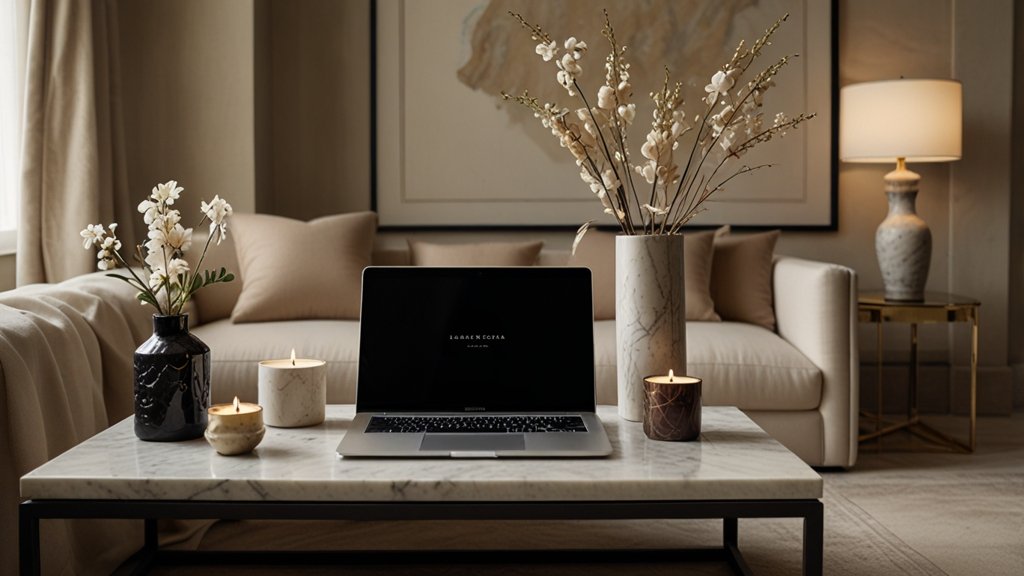Hook: Picture this: a lavish St. Petersburg ballroom in 1785. Sunlight streams through towering windows, catching the intricate gilt edges of a console table. Its surface isn’t mere wood, but a breathtaking mosaic of Siberian jasper and Ural malachite. This isn’t just furniture; it’s a silent ambassador of imperial power and Enlightenment ideals, commissioned by a woman who reshaped Russia – Catherine the Great furniture embodied an empire’s ambition in every carved detail. How did a German princess become the architect of Russia’s most iconic decorative arts legacy? Let’s explore the secrets within her palaces.
Crafting an Empire’s Aesthetic: Catherine’s Vision
Catherine II, “the Great,” wasn’t content to merely rule Russia from 1762 to 1796; she aimed to position it as Europe’s cultural powerhouse. Her passion for the arts was legendary, and furniture became a crucial tool in this mission. She didn’t just buy pieces; she orchestrated their creation, demanding a unique fusion.
- The French Foundation: Catherine adored the refined elegance of the French Louis XVI style – its clean lines, classical motifs (urns, lyres, laurel wreaths), and graceful proportions. This neoclassical wave sweeping Europe spoke of reason and order, aligning perfectly with her Enlightenment leanings.
- The Russian Grandeur: But French style alone wasn’t enough. Catherine demanded pieces infused with Russian scale, opulence, and materials. Furniture wasn’t just functional; it was monumental, designed to awe visitors and reflect the vastness and wealth of her empire. Think less delicate salon, more imperial statement.
The Masterminds Behind the Masterpieces: Cameron & Quarenghi
Catherine didn’t achieve this alone. She was a savvy talent scout, recruiting brilliant European architects who became instrumental in shaping her furniture legacy:
- Charles Cameron (c.1745-1812): Hired in 1779, this Scot became her go-to for interiors at Tsarskoye Selo (the Catherine Palace). He designed exquisite neoclassical rooms like the Agate Pavilion, where furniture wasn’t an afterthought but an integral part of the architectural ensemble. His designs often featured delicate marquetry, classical forms, and luxurious upholstery, perfectly scaled for intimate yet grand spaces.
- Giacomo Quarenghi (1744-1817): Arriving in 1780, this Italian master brought a more monumental vision, heavily influencing the Winter Palace and other grand projects. His furniture designs often reflected this scale – robust forms, bolder classical elements, and a sense of enduring power suitable for vast state rooms.
Where Magic Happened: The Imperial Cabinet Workshops
These weren’t just any carpenters. Catherine established and lavishly funded the Imperial Cabinet workshops. Think of it as a supercharged, state-sponsored atelier combining the best Russian master craftsmen (woodcarvers, cabinetmakers, upholsterers, stoneworkers) under one roof, working directly to the architects’ and Empress’s specifications. This centralized control ensured unparalleled quality and a cohesive imperial style.
Materials Fit for an Empress: Beyond Gold Leaf
Catherine the Great furniture is instantly recognizable for its astonishing use of materials. Forget simple mahogany:
| Material Showcase in Catherine’s Furniture | |
|---|---|
| Exotic Hardstones: | Siberian red agate, green jasper (malachite), rhodonite, lapis lazuli, native marbles. Used for tabletops, inlays, decorative plaques. |
| Precious Woods: | Gilded limewood for carving, Karelian birch veneers (a uniquely Russian favorite), mahogany, ebony. |
| Gilding & Metals: | Extensive mercury gilding (or ormolu mounts) on carved details, creating luminous highlights. |
| Luxurious Textiles: | Rich velvets, elaborate silks (often French Lyon silks), and fine leathers for upholstery. |
Craftsmanship: The Soul of Sovereignty
The materials were only the beginning. The craftsmanship transformed them into imperial icons:
- Intricate Marquetry & Pietra Dura: Master woodworkers created breathtaking pictorial and geometric inlays using contrasting woods. Stoneworkers achieved similar effects with hardstones – a technique known as pietra dura or “Russian mosaic,” where thin slices of stone were meticulously fitted together like a jigsaw puzzle to create seamless images or patterns.
- Virtuosic Carving: Gilded limewood was carved into astonishingly delicate swags, rosettes, acanthus leaves, classical figures, and imperial eagles. This wasn’t just decoration; it was a display of technical mastery symbolic of Russia’s cultural prowess.
- Embodied Ideals: The classical motifs referenced ancient Greece and Rome – civilizations Catherine admired and associated with reason, democracy (selectively interpreted!), and artistic achievement. The sheer scale and richness embodied her absolute power and Russia’s burgeoning wealth.
The Frog Service: A Radical Detour & Diplomatic Masterstroke
Perhaps the most surprising chapter in Catherine the Great furniture (and tableware) history is the Wedgwood Frog Service. Commissioned in 1773-74 for her newly built Chesme Palace (nicknamed “La Grenouillère” – The Frog Marsh), this was revolutionary:
- Breaking the Mold: Instead of traditional porcelain or silver, Catherine ordered over 944 pieces of creamware (“Queen’s Ware”) from the up-and-coming English potter, Josiah Wedgwood.
- The Design: Each piece featured a green frog emblem (for the palace) and hand-painted, encyclopedic views of British landscapes, gardens, country houses, and ruins – over 1,200 unique scenes! It was essentially a love letter to the English picturesque movement.
- Why it Mattered: This wasn’t just a dinner set. It was a diplomatic gesture, showcasing Catherine’s engagement with European intellectual trends and her support for innovative industry. It catapulted Wedgwood and Staffordshire pottery to international fame, proving British ceramics could rival continental porcelain. It marked a significant shift towards more “natural” aesthetics in tableware.
The Enduring Legacy: More Than Antiques
Catherine’s patronage left an indelible mark:
- Defining Russian Classicism: She established a distinct “Russian Empire” style that flourished long after her death, influencing architecture, interiors, and decorative arts across the nation.
- Showcasing Russian Craft: The Imperial Cabinet workshops proved Russia could produce world-class craftsmanship, elevating native skills and materials (like Karelian birch and hardstones) to international prestige.
- Art as Power: Her furniture stands as a testament to how rulers used art and design as potent tools of propaganda, cultural identity, and diplomatic soft power.
- Enduring Inspiration: Original pieces are crown jewels in museum collections (The Hermitage, Tsarskoye Selo), while the style continues to inspire designers seeking grandeur with classical restraint.
Bringing Catherine’s World into Yours: Actionable Appreciation
Catherine’s legacy isn’t locked away in palaces. Here’s how to engage with it:
- Visit Virtually (or In Person!): Explore the digital collections of The State Hermitage Museum or Tsarskoye Selo State Museum. Look closely at the furniture details – the marquetry, the carvings, the stonework.
- Spot the Influence: Notice neoclassical elements in modern design – clean lines, classical motifs reinterpreted, bold use of stone or metallic accents. That console table? It might have a distant cousin in Catherine’s vision.
- Appreciate Craft: Next time you see exquisite marquetry or stone inlay, remember the skill honed in those Imperial workshops. Consider the story materials tell.
- The Frog Service Lesson: Embrace innovation! Catherine chose the novel creamware over tradition. What modern materials or designs might be the “Frog Service” of today?
Catherine the Great furniture wasn’t just about sitting pretty; it was about sitting powerfully. It wove together threads of French elegance, Russian might, Enlightenment ideals, and breathtaking craftsmanship into a tangible symbol of an era and an extraordinary ruler. What piece of historical design most captures your imagination and why? Share your thoughts below!
You May Also Read: How to Choose the Perfect Beach House for Your Lifestyle
FAQs
What style is Catherine the Great furniture known for?
It’s primarily Russian Neoclassicism, heavily influenced by French Louis XVI style but scaled up with Russian imperial grandeur, using unique local materials and exceptional craftsmanship.
Where was Catherine the Great’s furniture made?
Most of her commissioned palace furniture was crafted in the Imperial Cabinet workshops in St. Petersburg, a state-sponsored atelier employing the finest Russian master craftsmen working to designs by her court architects.
What special materials were used in Catherine’s furniture?
Beyond fine woods and gilding, her furniture famously incorporated exotic Russian hardstones like Siberian red agate, green jasper (malachite), rhodonite, lapis lazuli, and native marbles for tabletops and intricate “Russian mosaic” inlays.
What was the Wedgwood Frog Service, and why was it significant?
Commissioned for her Chesme Palace, it was a massive 944-piece creamware dinner service by Josiah Wedgwood, adorned with British scenes. It was revolutionary for using pottery over porcelain, boosted Wedgwood’s fame, and showed Catherine’s embrace of innovation and English aesthetics.
Who were the main architects designing her furniture?
Charles Cameron (for Tsarskoye Selo, Agate Pavilion) and Giacomo Quarenghi (for the Winter Palace and other large projects) were the key architects whose designs dictated the form and decoration of her most important furniture suites.
Where can I see original Catherine the Great furniture today?
The largest and most significant collections are housed in The State Hermitage Museum (Winter Palace) in St. Petersburg and the palaces of Tsarskoye Selo (Catherine Palace), also near St. Petersburg.
How did Catherine’s furniture reflect her reign?
It embodied Enlightenment ideals (through classical motifs), showcased Russian wealth and power (scale, exotic materials), promoted native craftsmanship, and served as cultural diplomacy (e.g., the Frog Service). It was art as imperial propaganda.








